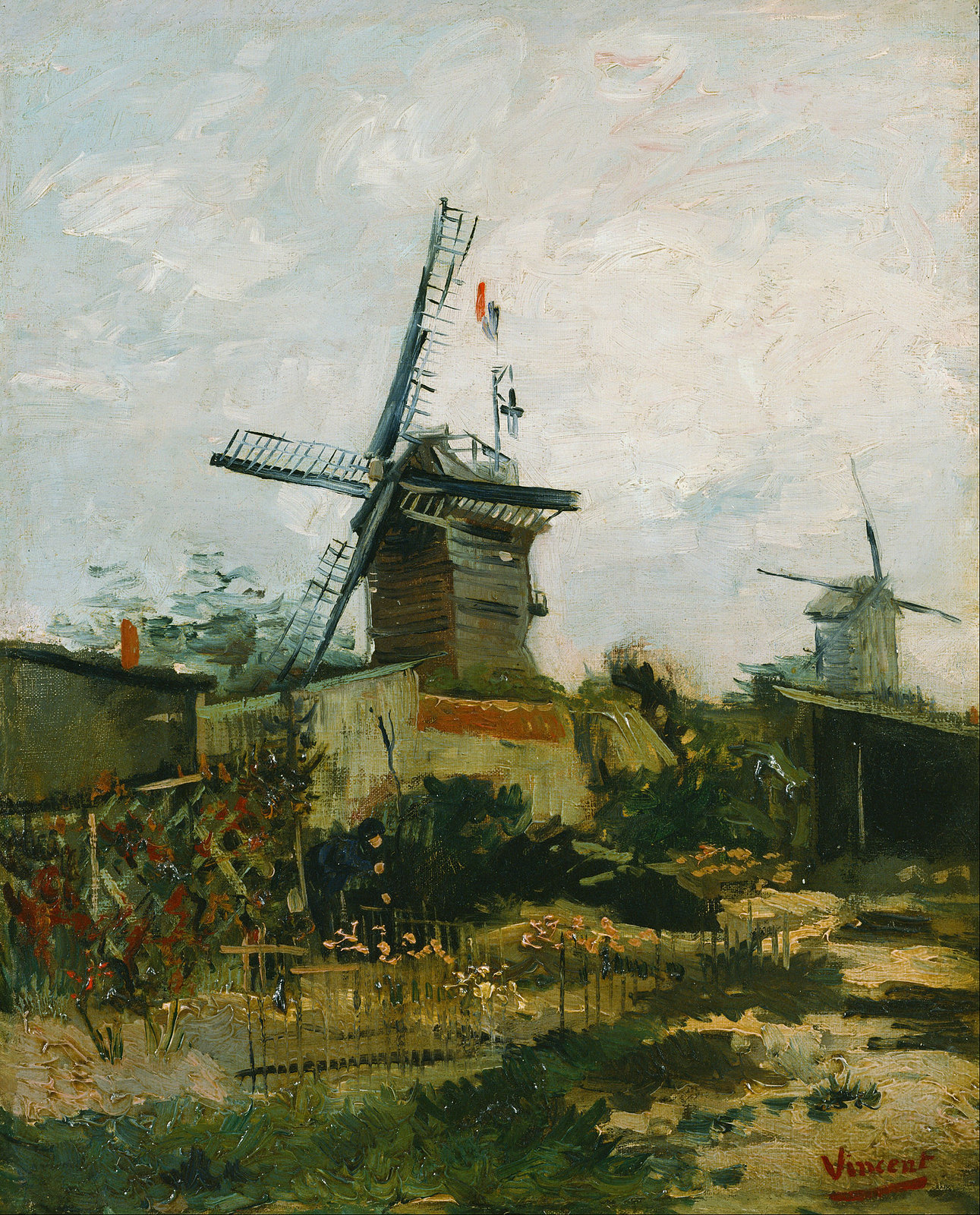The year was 1871.
Claude Monet had been exiled to England during the Franco-Prussian War.
Now he was traveling in Holland, staying in Zaandam, a picturesque little town near Amsterdam.
During his stay, he painted about 20 views of the town and its environs.
The weather was mostly overcast, and he conveyed the atmosphere by limiting the range of colors, as was the style among contemporary Netherlandish landscape painters.
In a letter to his friend Camille Pissarro, who was living in England at the time, Monet wrote,
Years later, in May 1886, the French Embassy in Amsterdam invited Monet to visit Holland again.
He spent about a month in the Hague, traveling through Rijnsburg and Sassenheim and painting the beautiful tulip fields.
Unlike his last visit in 1871, the weather was good, and is reflected in the more vivid colors.
Before the Impressionist movement, most paintings were created in a studio. By painting en plein air “in the open air”, the Impressionists could capture the transient effects of light more effectively. Instead of focusing on details, they painted the overall visual effect, with brushwork and color that created a more dynamic representation of life.
Impressionism is like the images at the edge of our vision … the images in our dreams … the windmills in our minds.
Enjoy the Windmills of Monet as you listen to Michel Legrand’s “Windmills of Your Mind”.



Monet sought to break away from the traditional subjects favored by academic art. He was drawn to the countryside and natural landscapes, and windmills were often found in rural settings, offering the opportunity to depict nature and rustic scenes.



Windmills have distinctive shapes and blades that can create interesting patterns of light and shadow, especially during different times of the day. Monet was fascinated by the transient effects of light, and windmills provided an ideal subject for exploring these effects.




Other Impressionist artists, like Pissarro, also loved to paint windmills. The rotating blades of windmills added a sense of movement and energy to the scenes, contributing to the dynamism of the paintings. This dynamic quality allowed artists to experiment with capturing motion and spontaneity in their works.


Windmills have a unique and recognizable silhouette, making them stand out in a composition. The artists could use these shapes to experiment with form and composition, emphasizing the abstract qualities of the subject.



